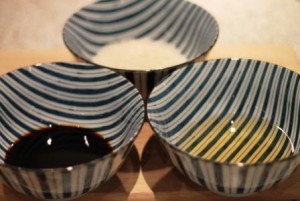 In Japan, there are many different sauces and dressings are made but they are used in a different way from what we know in Denmark.
In Japan, there are many different sauces and dressings are made but they are used in a different way from what we know in Denmark.
Soy sauce is an indispensable ingredient in Japanese cuisine. The selection of soy sauce is as big as the cheesecake in a European supermarket. In Japan, soy sauce is used as a spice it is an ingredient that is used with care. It is used in a way so it either raises the court or adds new flavors to the court.
It does matter which soy sauce is used for the individual Japanese dishes. One of the sauces that has become very popular in Europe and in Denmark is Teriyaki sauce. It is a classic Japanese sauce that both children and adults enjoy eating.
On the course Traditional Japanese cooking class for beginners you learn to make a Japanese dish with Teriyaki sauce. It tastes thousand times better than the one that can be bought in a bottle in the supermarket.
_
Zoë has held sushi courses and cooking classes for A. P. Moller – Maersk, Hugo Boss Nordic, Novo Nordisk, Novartis, Velux, Gorrissen Federspiel, Beierholm revision, Elbek & Vejrup and many more.








